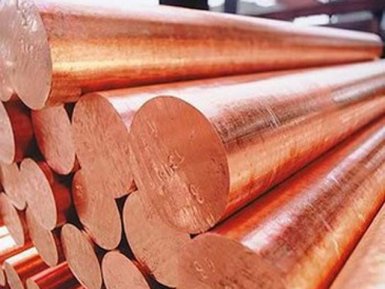The history of the discovery of titanium. Physical and mechanical properties.

Are you interested in the properties and discovery of titanium and its alloys from the supplier company AvecGlob? Here you will find interesting information on this topic
History of discovery
Originally named gregorite, after the British chemist William Gregor, who discovered it in 1791, titanium was independently discovered by the German chemist M.H. Klaproth in 1793. The new element was called titanium in honor of the gods of Greek mythology, but until 1910, titanium was not obtained in its pure form.
Physical properties
Titanium is the 22nd element in the periodic table. Its atomic weight is 47.867 mA. This is an element with a low density (4510 kg / m3); about 60% less dense than steel. Titanium is non-magnetic, and has good thermal conductivity,
its melting point is 1650 0 C, which is also higher than for steel. Titanium has a high passivity; therefore it is distinguished by increased corrosion resistance to most mineral acids and chlorides. It is also non-toxic and biologically compatible with human tissues and bone, making it an ideal material for medical implants.
Ore — natural sources of titanium
Rutile and ilmenite, the two primary minerals that contain titanium make up 24% of the earth’s crust, making titanium the ninth most abundant element on the planet. However, it is found in nature only in chemical combinations; The most common concomitant elements are oxygen and iron.
Supplier — AvekGlob Company — offers various titanium alloys at an affordable price from the manufacturer. The supplier guarantees the timely delivery of products to any address specified by the consumer.
Natural sources of titanium and their application
This material is supplied in two crystalline structures — rutile and anatase, each of which has its own properties and functions. Titanium dioxide exists in the phase of anatase at a temperature of up to 500 о C and turns into a rutile phase at higher temperatures. The material can then be used to hydrolyse water, using it to produce hydrogen fuel.
In medicine, titanium implants are used to replace or stabilize a broken bone. Tiny titanium implants are even used to improve hearing in people with certain types of deafness. The screw-like titanium rod is drilled into the skull behind the ear and attached to the external sound processor. The external unit selects sounds and through the titanium implant to the inner ear, bypassing any problems in the middle ear.
In 2010, researchers announced the development of Tifam — a structure similar to polyurethane foam, but additionally saturated with titanium powder. The porous structure mimics human bone and allows the cells of human bone tissue to firmly connect to the implant.
Supplier — AvekGlob Company — offers to purchase a different range of titanium alloys. Products can be bought at a price formed on the basis of European and world standards of production. Implementation is possible in bulk and retail, for regular customers, a flexible system of discounts operates.


